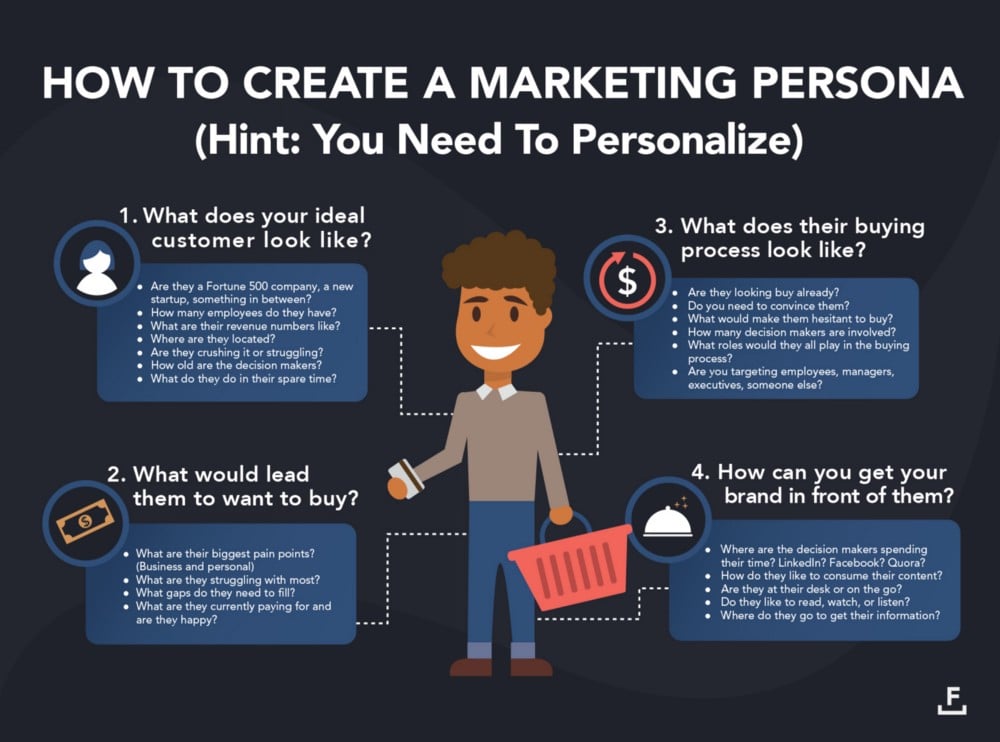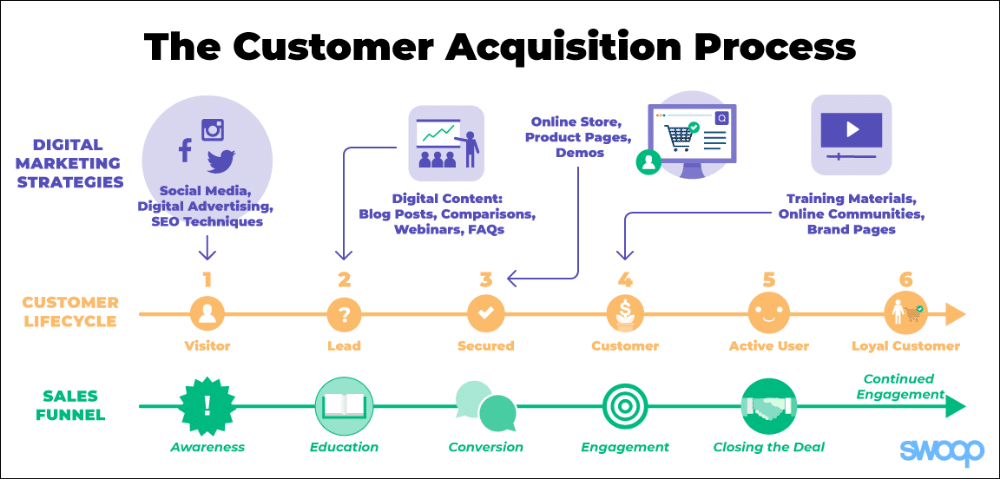Any new client project’s success hinges on the success of proposals. You won’t be able to set clear goals if you don’t have them. Also, you have nothing to measure your success against.
More importantly, without a proposal, your client has no way of knowing if you understand their issue.
However, before you can even think about how to write a business proposal, you’ll need information, and the only person who can provide it is your client.
As a result, make sure you ask the relevant questions for your proposal writing.
Importance of Setting a Meeting First
When you meet with a potential client about a project, you should gather specific information ahead of time to help you learn more about the project, decide whether you and the client are a good fit, and understand how to prepare your proposal and contract.
Similarly, whenever you accept a project, you must learn as much as possible about it so that you can get started right away.
Setting a meeting first is crucial to understanding the client’s objectives and missions.
Make the client aware of your basic needs, and find out if they will be met before you get into the details of the project.
Even before your initial face-to-face appointment, the customer may be able to answer these questions over the phone.
When it comes to bringing up these issues, use your best judgment.
After you and the customer have cleared the first steps, you may move on to learning more about the project.
The questions below will help you learn more about the project and determine whether it is a good fit for your skills.
They’ll also assist you in properly defining the project scope and other contract terms.
10 Questions You Have To Ask
1. What Does Your Business Do or Sell?
First and foremost, you must learn about the prospective client’s business. Inquire about their one-of-a-kind products and services.
Don’t just ask about the kind of services available. Learn more about the features and benefits of its key products and services, and inquire about how its offerings help customers solve challenges.
2. Who is your target audience?
Beauty is in the eye of the beholder, and design is subjective. This website isn’t solely for the benefit of your client.
It must strike a strong chord with its users and target audience; otherwise, they will not use it – online audiences are unpredictable these days, thanks to the intense competition.
Investigate their user demographics and psychographics, such as media consumption habits, slang terms, and lifestyle preferences.
What kind of purchases do they make?
Is there a gap between your current audience and your target market that you need to close?
You can better define the layout, appearance, and navigation of the website if you know more about the end-users.
3. Who Are Your Competitors?
Finding out who your client’s main competitors are can be a valuable source of information.
You can collect information that will help guide your web design once they’ve identified their primary competitors.
Examine the aspects on their website that operate well and discover if there are any that don’t.
Your goal here is to learn from the successes and failings of others, not to replicate what they’ve done previously.
Another useful indicator of your client’s likes and dislikes is asking them to point out what they love and don’t like on their competitors’ websites.
4. What Makes You Different from Your Competitors?
Knowing your client’s unique selling proposition will aid you in creating a website that stands out from the rest.
To be successful in the busy, noisy, and competitive online environment, businesses must be extraordinary.
Now, how do you get people’s attention when they first visit your website? What can you do to make that important first impression count?
It doesn’t have to be anything extravagant; it might be something as basic as a free consultation or excellent customer service.
Speedy or free product delivery, stocking the cheapest or highest quality products in their area, having an exceptional warranty or returns policy, or giving unique packages are all aspects that make firms stand out.
You can deliver a site that is similar to your client’s competitors by studying how they differ from their competitors.
5. How Do You Acquire New Customers?
Customer acquisition is all about bringing in as many high-value, in-market customers as possible, and it’s undoubtedly one of a company’s most important initiatives.
It enables brands to grow their customer base, implement customer loyalty programs, and reduce costs in order to boost their return on investment (ROI).
6. What Are Your Goals for this Project?
Inquire about your customer’s definition of success. Do they want to increase the number of visitors to their website, the average order size, or the number of participants on their online forum?
Perhaps they want to increase blog engagement, raise brand awareness, or get readers to join up for their email newsletter/free trial/white paper, among other things.
You have a better chance of developing an efficient solution if you identify your client’s pain points and determine the issues they’re trying to fix.
7. What’s the Scope of the Project?
Furthermore, you’ll need a complete idea of your client’s final deadline, as well as any significant milestones they’d like to hit along the way, to keep the project on track and achieve its goals.
You must also be aware of the budget and, more importantly, determine whether the timeframe and budget are flexible.
8. What Is Your Available Budget?
Pricing is another major expectation to set when preparing proposals. Find out at least a general range of your client’s budget for the project throughout the interview process.
You want to make sure it’s within the range of what you’re willing to pay for the service. Also, you don’t want to waste time on a proposal if the client’s rate expectations aren’t met.
Don’t proceed with the client proposal if the prospect isn’t even near to what you expect to be paid or the project.
9. If You Accept the Proposal, What’s the Next Step?
Set goals for moving forward to avoid sending a customer proposal and never hearing back from the prospect. If the prospect wants to work with you, talk to them about how you can get started right away.
Outline the next stages, and then, include a date in your proposal for when they must complete them in order to secure the plan’s arrangements and details.
10. How Did You Hear About Me?
If a client came to you because of a referral, you should thank them (even if the project doesn’t work out). You’ll want to know if they found you through an article you published, a product you made, or a Google search.
For obvious reasons, knowing where clients can find you is crucial. If one channel is sending you more leads than another, focus your efforts there.
The Next Steps You Have to Take
Research
The process of gathering information about your potential clients is known as market research. It answers questions like — Who are they? — and helps you identify your client’s consumer profiles, target market, and determine the viability of their business. What do they buy, and how do they shop?
You can improve your client’s product, service, and overall strategy by learning about their ideal customer’s challenges, needs, and present solutions.
Gather with Your Team
Gather your employees together and set out your goals and objectives for the project. Be transparent, and let everyone know how their work will be delegated to them. Assign tasks to specific individuals, and ask for feedback regularly.

Brainstorming
You’ll want to brainstorm everything you can about your client’s target market, including their age, gender, and location, as well as their income and leisure activities. Eventually, you’ll construct a persona (or a few) representing their ideal customer profile.
Then, you’ll consider other issues, such as how you’ll contact these people. What is the maximum price consumers are willing to pay for your client’s product? This is where your market tactics will come from. You’ll also look at the market as a whole, including its size and competitors.
Create Schedule and Milestones
Your project schedule is a crucial document that shows when certain project tasks will begin and end, as well as major measurement milestones. It will be used to track the progress of the project. All stakeholders will have access to it, and it should be followed as closely as possible.
Conclusion
If you don’t have any direction or know what you’re doing, you’ll end up fumbling through meeting after meeting with no plan, no idea of the budget, and generally, messing things up.
When it comes to qualifying clients and assisting them in choosing the correct service, use these ideas and mix them with your personality and flair, and you’ll be miles ahead of the competition.
This early understanding and preparation will assist you in forming partnerships with the ideal clients and putting your ideas into action.
If you’re looking for proposal software that contains proposal templates, we recommend Prospero.







